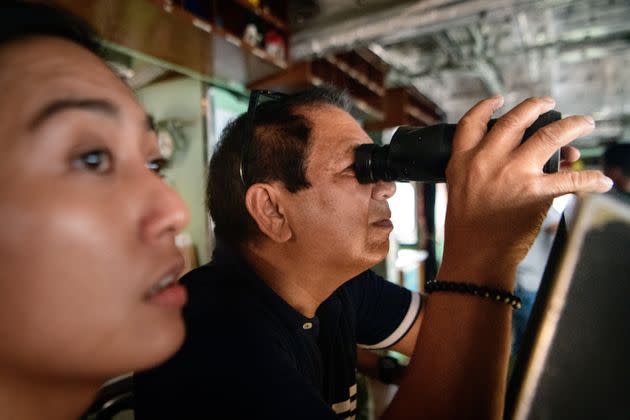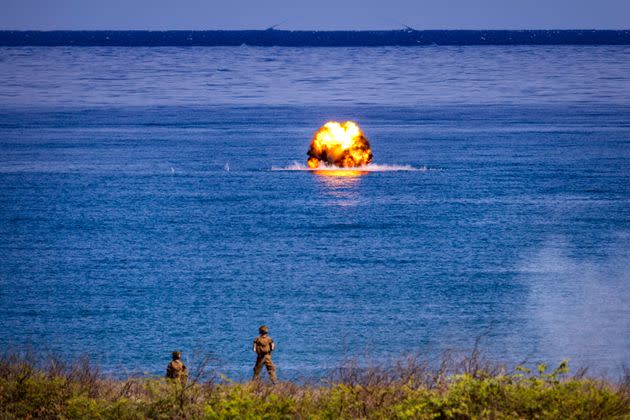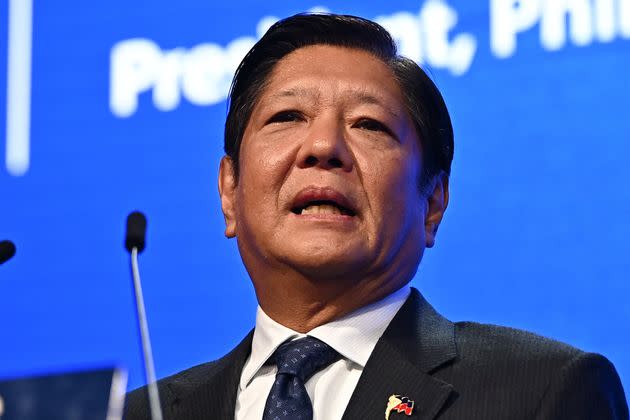The Philippines Finds Itself Trapped Between Surging Trump And Rising China Tensions
- Oops!Something went wrong.Please try again later.
- Oops!Something went wrong.Please try again later.
MANILA, Philippines — Last month, China’s coast guard attacked Filipino troops with axes and knives, ramming vessels on a routine mission to resupply a Philippine outpost on a disputed shoal in the South China Sea and severing the thumb of one sailor.
A week later, the Philippines found itself bracing for the United States — a long-standing ally and defense partner — to withdraw from global affairs as Donald Trump makes gains ahead of November’s election for the White House.
A withered performance by 81-year-old U.S. President Joe Biden during his first debate of the season against 78-year-old Trump saw the right-wing populist former president surge in electoral betting markets, prompting panicked Democrats to scramble for an alternative standard-bearer who could top the ticket — and many international observers to brace for the return of President Trump and his “America First” agenda.
“A U.S. abandonment of East Asia would force weaker countries in the region to, without choice, accept China’s carrot-stick hegemony,” Rep. Mark Cojuangco, a national lawmaker in the Philippines’ House of Representatives, told HuffPost. “We would lose our territorial integrity, and American ‘commitment’ would always be doubted going forward.”
During Trump’s administration, the Philippines was ruled by then-President Rodrigo Duterte, a similarly brash populist who lashed out at Washington and sought to forge closer ties with Beijing. But increasingly aggressive Chinese actions to claim uninhabited islands and fishing grounds in waters internationally recognized as part of the Philippines have driven current President Ferdinand “Bongbong” Marcos Jr. to shore up relations with the U.S.
Marcos, 66, the namesake son of a former dictator, cast China’s push for dominance in the heavily trafficked waterway as a challenge to the “open, inclusive and rules-based international order” established after the end of World War II, which sought “to make the floors of the United Nations the last battlefield.”

“We made a determination for humanity to survive and to never again be wiped out in another holocaust,” Marcos said in a speech at the Shangri-La Dialogue summit in Singapore in May.
“The Philippines has always been part of that history,” he said. “Amidst the rubble of war, we were there amongst the architects of the new peace.”
Yet he warned that Filipinos remained “unyielding in protecting our patrimony, our rights and our dignity as a proud and as a free country.”
In a bid to lower the heat, Filipino and Chinese diplomats held a meeting Tuesday in Manila. At the same time, however, the Philippines is openly courting U.S. battery investors to help prop up the country as an alternative source of nickel, as Washington looks to scale back China’s dominance over electric-vehicle supply chains.
The South China Sea, which the Philippines refers to as the West Philippine Sea, is the one of the world’s busiest shipping routes, with 60% of all maritime trade passing through its waters. China drills more than one-third of its petroleum products and two-thirds of its natural gas offshore in a region ringed by Vietnam, Malaysia, Brunei and the Philippines.
Starting in 2015, the U.S. began patrolling the sea in what Washington calls “freedom of navigation” missions aimed at keeping Beijing from asserting total sovereignty over the international waterway. When the Duterte administration accepted Chinese military aid in 2017, Trump “did nothing to change Duterte’s pro-China policy,” said Patricio Abinales, an expert in Philippine politics at the University of Hawaiʻi.

After taking office in 2022, Marcos renewed ties with the U.S., last year announcing four new sites for American military bases across the archipelago nation as the Biden administration sought to bolster defenses of Taiwan, the self-governing island democracy that hasn’t been ruled from Beijing since 1895.
U.S. military officials have said repeatedly over the past year that China will invade Taiwan within the decade, particularly after Taiwanese voters gave the presidency to Lai Ching-te, who is perceived as more pro-independence than his predecessor from the same party. Chinese leader Xi Jinping has signaled that he thinks the U.S. is trying to goad the People’s Republic into a risky amphibious invasion, but Western experts last month told Business Insider that this was part of Beijing’s strategy to drive a wedge between Washington and its allies in Brussels.
At Singapore’s recent global gathering on Asian security, a top Chinese general confronted Marcos, accusing the Philippines of jeopardizing peace in the region. But tensions reached new heights in mid-June when China’s coast guard assaulted Philippine sailors en route to reinforcing a rusting World War II vessel, which Manila parked atop a contested reef in a bid to keep China from claiming the island and setting up its own outpost.
“I think there’s going to be a war, I really do,” Carlos, a taxi driver in the Metro Manila city of Pasay who gave only his first name, said without prompting after confirming that the reporter in his car that late morning was American. “Are you guys going to back us?”
Since 1951, the U.S. has had a NATO-like defense pact with the Philippines, which Washington had seized as a colony along with Puerto Rico and Guam in 1898 but freed in 1946 following the end of World War II. Despite years of up-and-down relations, Biden cemented closer ties with the Philippines by establishing new Marine units based in Honolulu and Okinawa, Japan, with U.S. forces there running frequent joint exercises with their Filipino counterparts.

“The Biden administration has done much to make up for the lackluster support the Trump administration gave to the Philippines,” Abinales wrote in an email. “Of course the Philippine military and Filipinos in general want more than just joint exercises (like perhaps coming to the aid of Filipino ships harassed by the Chinese Coast Guard), but we are patient.”
If Biden loses his reelection bid, however, China’s Xi “can easily flatter Trump” and push the U.S. to pull back support from its ally, Abinales said.
“Given Trump’s lack of interest in anything happening outside the U.S… and a strong isolationist movement inside the GOP, Filipinos expect that reduction to happen,” he said.
Marcos recently laid out what appeared to be a red line, stating that the death of any Filipino in the South China Sea conflict would be seen as “very close” to an act of war.
Cojuangco said it’s time for the U.S. to “put up or shut up.”
“We’ve been your allies since before World War II,” the Filipino lawmaker said. “It’s time for you to show us love as your allies and brothers.”
